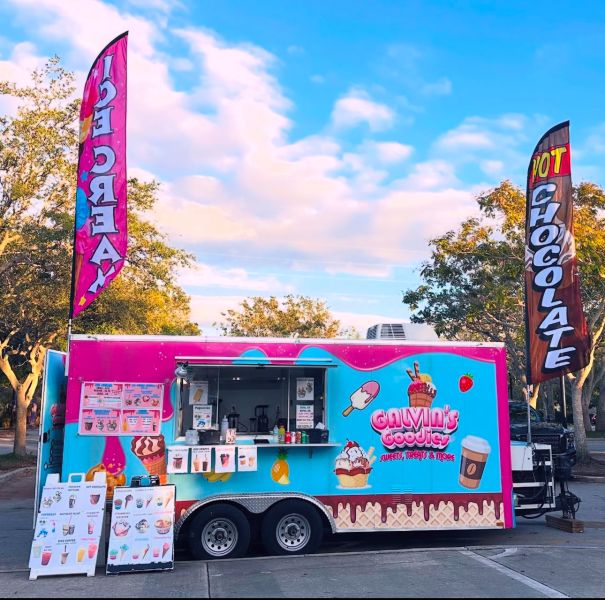By Destiny McDaniel
On Saturday evenings, Scott Street in Ybor City fills with parked cars and crowds as diners gather outside a local restaurant, soaking in live music and the glow of fairy lights. Meanwhile, across town, a food truck prepares for the dinner rush alongside others in a bustling lot. From burgers to ice cream, food trucks are revolutionizing the way people eat their meals.
Food trucks are becoming more popular and common in Tampa and St. Petersburg, replacing sit-down restaurants as more people opt for truck dining rather than sit-down restaurants.
Over the past decade, food trucks have increased in popularity, offering a cheaper and more convenient way for chefs to serve the public.
In contrast to traditional restaurants that require a massive upfront of cash, a long-term lease and a full team of employees, food trucks offer a low-cost alternative. Their mobility allows them to serve in several places instead of being tied to one site.
Chefs operating food trucks often have greater flexibility to experiment with menus, adapting their offerings to suit each new location.
“They’re just as convenient location-wise because they move around much more easily,” said Brie Grant, an expert chef for over a decade in the Tampa-Lakeland area. “But when they run out of food, that’s it—pack up shop.”
Food trucks are also beginning to be the preferred choice over restaurants due to the growing annoyance of tipping culture.
“When dining out at a restaurant, customers usually must pay 15-20% tip on top of the bill, and that can add up to a meal,” Grant said. “Food trucks have more of a take-it-or-leave-it tipping practice though, so that dining out is not as costly. Food trucks typically serve meals faster than traditional restaurants, too, so food trucks can also be appealing to busy people. But yes, food trucks are a winner in popularity. I did think of getting one myself.”
While some see food trucks as a more affordable and efficient alternative to traditional dining, others argue the experiences serve entirely different purposes.
“I don’t believe you can compare dining in a food truck versus dining in a fine dining restaurant,” explained Koy Wilson, a Tampa fine dining restaurant manager. “Food trucks are for grab-and-go meals, while fine dining is about being served and relaxing. I don’t think that food rucks are overtaking restaurants, at least not yet. But with the new generation, maybe that will happen.”
Food truck culture has been thriving in Tampa, with plenty of festivals celebrating the food truck restaurants. On Feb. 22, the city experienced its annual Tampa Taco Festival at Al Lopez Park, with over 20 food trucks serving all different types of tacos.
“Honestly, food trucks just hit differently,” Melda Pajazetovic said. “You really can’t get this type of flavor in a restaurant.”
Recent events, such as SoulFest on April 5 — which featured soul food-inspired trucks — and Tampa’s International Food Truck Festival 5.0 on April 12-13, highlighted the growing influence of food trucks on the local culinary scene. Their mobility enables them to efficiently serve large crowds at major gatherings, often making them a more convenient option than traditional restaurant catering.
Many festivals and gatherings choose food trucks due to their convenience, quick service and ability to provide diverse menu options on-site.
As businesses evolve, food trucks are growing more popular. With their mobility, affordability and versatility, they are revolutionizing the way people eat, one stop at a time.

